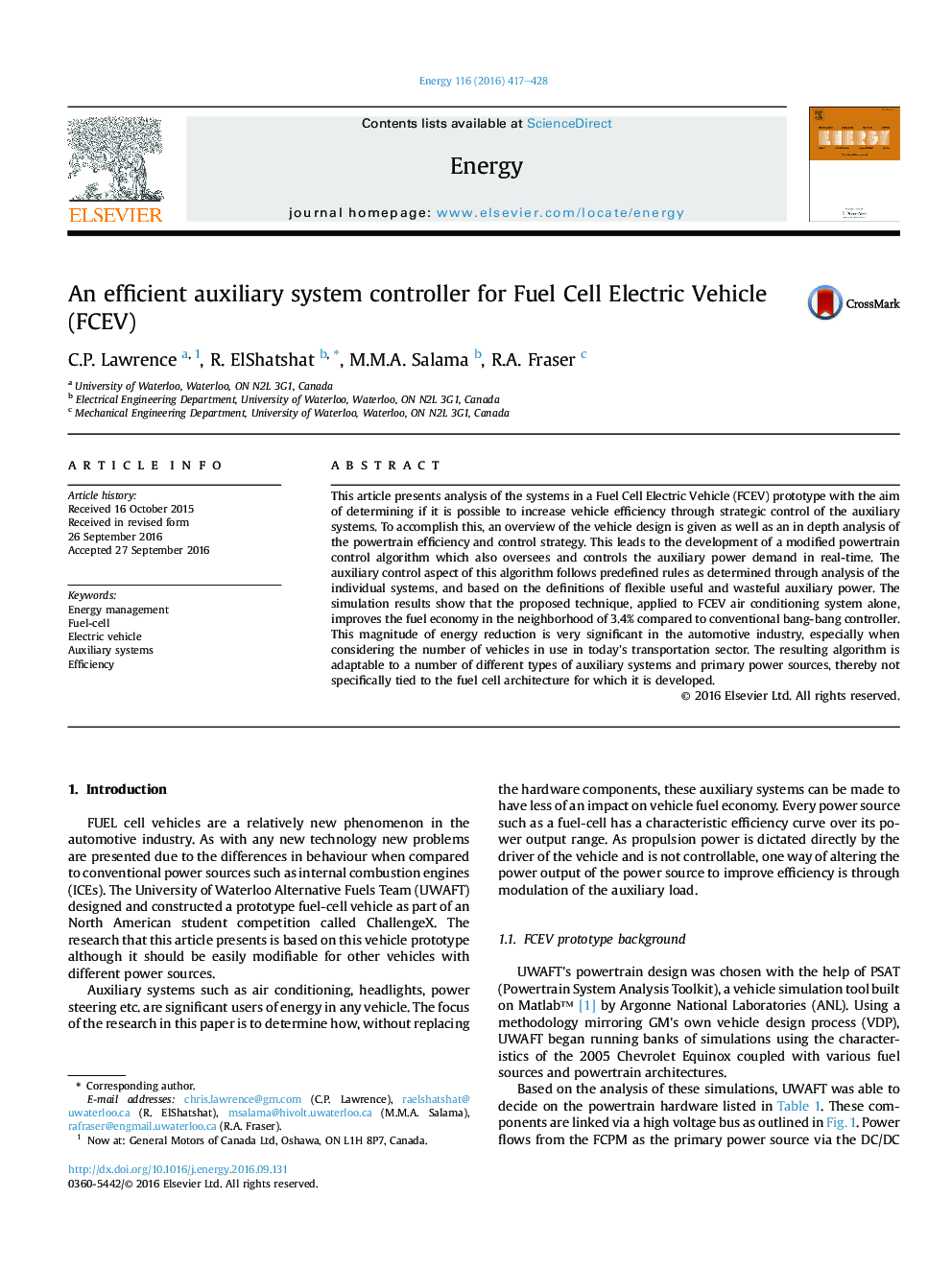| Article ID | Journal | Published Year | Pages | File Type |
|---|---|---|---|---|
| 5477298 | Energy | 2016 | 12 Pages |
Abstract
This article presents analysis of the systems in a Fuel Cell Electric Vehicle (FCEV) prototype with the aim of determining if it is possible to increase vehicle efficiency through strategic control of the auxiliary systems. To accomplish this, an overview of the vehicle design is given as well as an in depth analysis of the powertrain efficiency and control strategy. This leads to the development of a modified powertrain control algorithm which also oversees and controls the auxiliary power demand in real-time. The auxiliary control aspect of this algorithm follows predefined rules as determined through analysis of the individual systems, and based on the definitions of flexible useful and wasteful auxiliary power. The simulation results show that the proposed technique, applied to FCEV air conditioning system alone, improves the fuel economy in the neighborhood of 3.4% compared to conventional bang-bang controller. This magnitude of energy reduction is very significant in the automotive industry, especially when considering the number of vehicles in use in today's transportation sector. The resulting algorithm is adaptable to a number of different types of auxiliary systems and primary power sources, thereby not specifically tied to the fuel cell architecture for which it is developed.
Related Topics
Physical Sciences and Engineering
Energy
Energy (General)
Authors
C.P. Lawrence, R. ElShatshat, M.M.A. Salama, R.A. Fraser,
